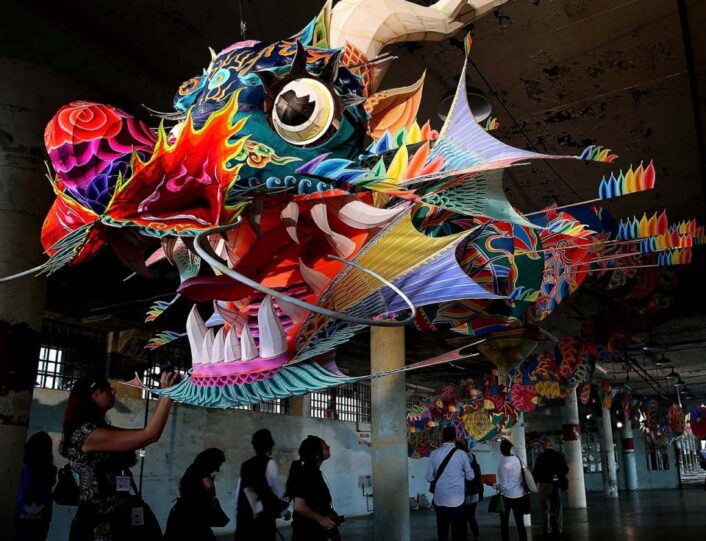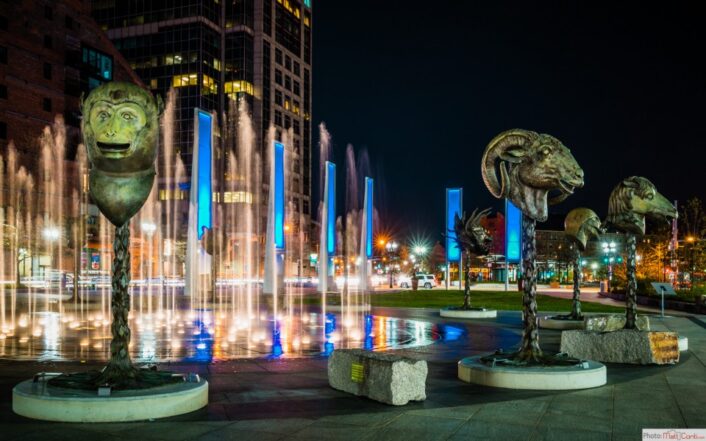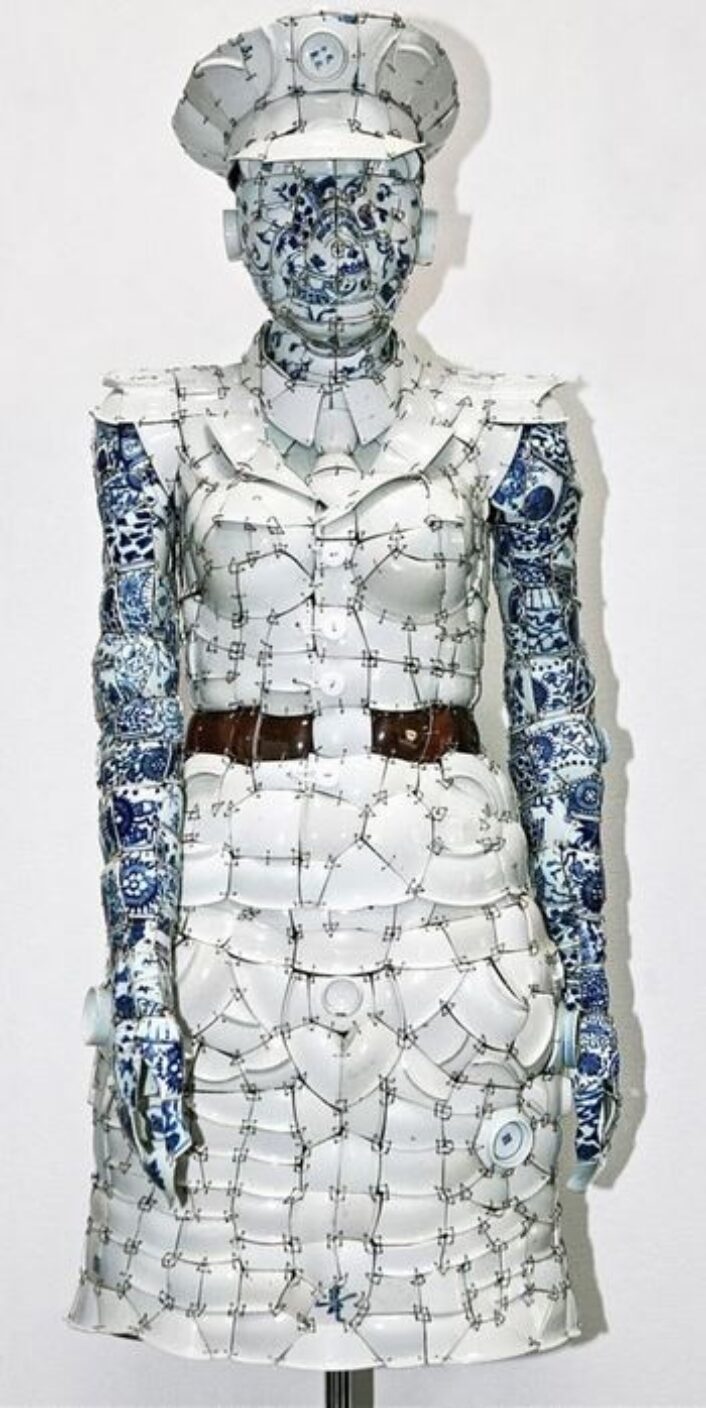Fine Art
Ai Weiwei on Porcelain
At our newly renovated studio, guests often remark on the incredible artwork collection. There are many different mediums and everyone has their favorite, but we receive the most comments on a pair of Ai Weiwei porcelain plates that greet you when entering our main conference room.

Ai Weiwei (Chinese, b. 1957), War, 2017, (left), and Crossing the Sea, 2017 (right), blue and white porcelain plates. Each 19″ diameter. Images courtesy of Lisson Gallery.
It’s not until you are in front of the plates do you realize the artist has taken the traditional Chinese pottery decoration and instead depicted contemporary scenes of social and political crises.
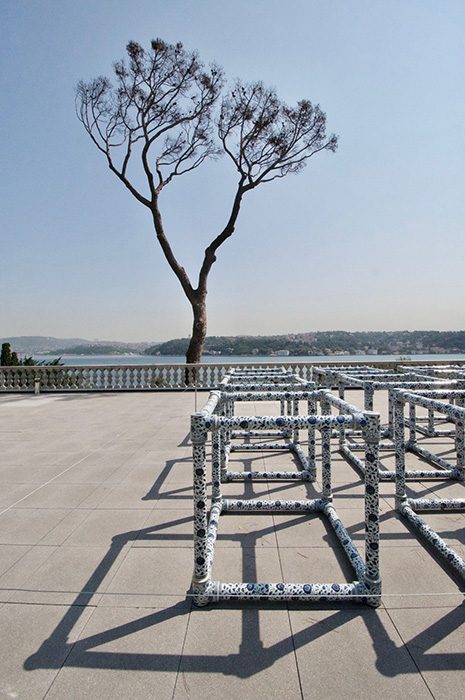
An outdoor sculpture by Ai Weiwei in the courtyard of the Sakıp Sabancı Museum next to the Bosphorous. Image courtesy of Hyperallergic.
His recent exhibition Ai Weiwei on Porcelain opened in September 2017 in the Sabancı University Sakıp Sabancı Museum in Istanbul, Turkey, and came to a close in April 2018. This exhibition featured over 100 pieces and explored concepts of authentic traditional artwork in the context of current world events.
The exhibit explored the Silk Road connection between Weiwei’s native China and Turkey according to AD. Weiwei conceived unique ways to reinterpret ancient techniques and apply his own artistic and creative message. Many artworks, such as the blue and white porcelain plates, will cause viewers to do a double take — The black and white painted walls feature images of the socioeconomic crisis in the Middle East with an image of Weiwei dropping a Han Dynasty Urn in the foreground.
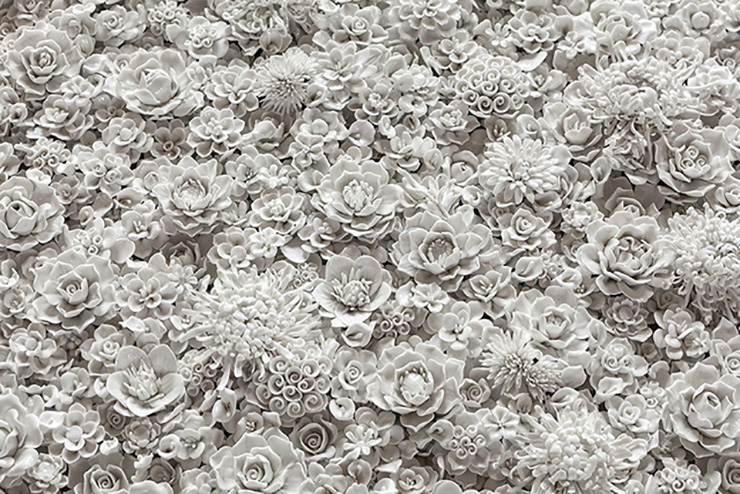
Ai Weiwei, Blossom, 2014. Detailed view. Image and details courtesy of Creative Boom.
Architectural Digest asserts Weiwei as one of the most influential contemporary artists. Not only because Weiwei is socially and politically outspoken but also because of the wide range of mediums he employs — porcelain, large-scale installations, film, and architecture.
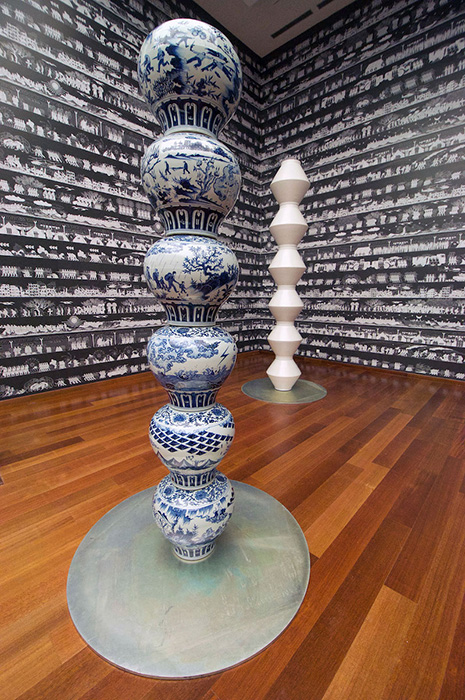
An installation view of Weiwei’s columns placed among stacked white vases as a nod to Brancusi’s Endless Column series with black and white Egyptian wall painting in the background. Image courtesy of Cfile Foundation.
This exhibition room featured towering blue and white porcelain “columns.” Weiwei’s columns are placed among stacked white vases as a nod to Constantin Brancusi’s Endless Column series.

Ai Weiwei’s blue and white porcelain plates on view at the exhibition. Image courtesy of Hyperallergic.
We are thrilled to have such Ai Weiwei’s porcelain plates in our studio. We appreciate how he interprets world events and endlessly pushes his artistic boundaries.
